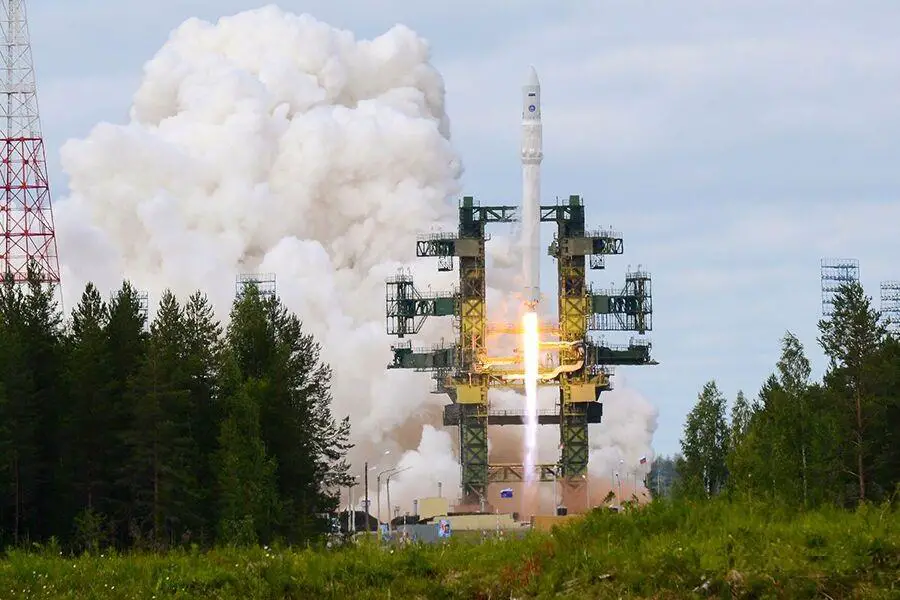An Angara-1.2 rocket operated by the Russian Space Force launched a spy satellite for the Russian Defense Ministry from the Plesetsk Cosmodrome on Oct. 15. The exact identity of the payload is not known, other than it received the Kosmos-2560 designation upon reaching Sun-synchronous Orbit (SSO). While initially suspected to be a small military optical reconnaissance satellite designated EMKA-3, new reports offer the payload is part of a different series of satellites and is designated EO MKA No. 3. The Kosmos-2560 is a small military satellite optical reconnaissance satellite with a high a high resolution camera, according to open source information. Robust telecommunication is being maintained with the satellite and its onboard systems are functioning normally, the Russian Ministry of Defense (MoD) said.
Kosmos-2560 is associated with two previously launched satellites: Kosmos-2551, which launched aboard a Soyuz-2.1v rocket in September 2021, and Kosmos-2555, which launched aboard the first orbital Angara 1.2 rocket in April 2022. Based on the report that Kosmos-2560 is EO MKA-3, and that Kosmos-2551 and 2555 were deployed into similar orbits with similar levels of mystery, it is likely that Kosmos-2551 and 2555 are actually EO MKA-1 and MKA-2, respectively. These spacecraft were previously understood to be named EMKA-2 and MKA-R. The launch attracted the ire of the United States which accused Moscow of placing the satellite into the same orbital plane as USA 326, an American military satellite that launched into low-Earth orbit earlier on February 2, 2022.

The Angara rocket family is a family of launch vehicles being developed by the Moscow-based Khrunichev State Research and Production Space Center. The launch vehicles are to put between 3,800 kg (8,400 lb) and 24,500 kg (54,000 lb) into low Earth orbit and are intended, along with Soyuz-2 variants, to replace several existing launch vehicles. The launch of Kosmos-2560 is just the second time that Angara 1.2 rocket has launched operationally, and it was the second launch using the 1.2 variant, designed specifically for payloads launching to LEO. While the Angara 1.2 can only launch 3,800 kg to LEO, the more capable version — the Angara A5 — has flown a majority of Angara missions to date.
Plesetsk Cosmodrome is a Russian spaceport located in Mirny, Arkhangelsk Oblast, about 800 km north of Moscow and approximately 200 km south of Arkhangelsk, the cosmodrome dates to 1957. Originally developed as an ICBM site for the R-7 missile, it also served for numerous satellite launches using the R-7 and other rockets. Its high latitude makes it useful only for certain types of launches, especially the Molniya orbits, so for much of the site’s history it functioned as a secondary location, with most orbital launches taking place from Baikonur, in the Kazakh SSR. With the end of the Soviet Union, Baikonur became a foreign territory, and Kazakhstan charged $115 million usage fees annually. Consequently, Plesetsk has seen considerably more activity since the 2000s.















